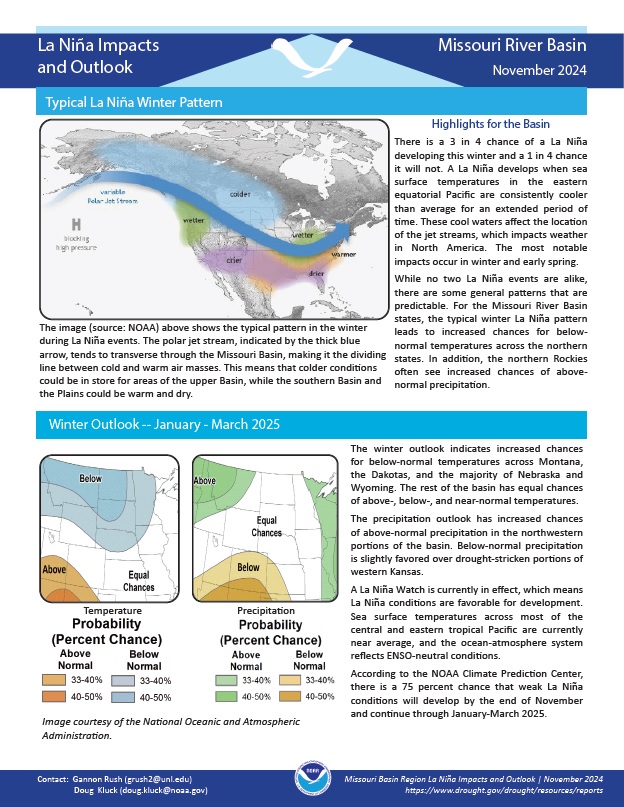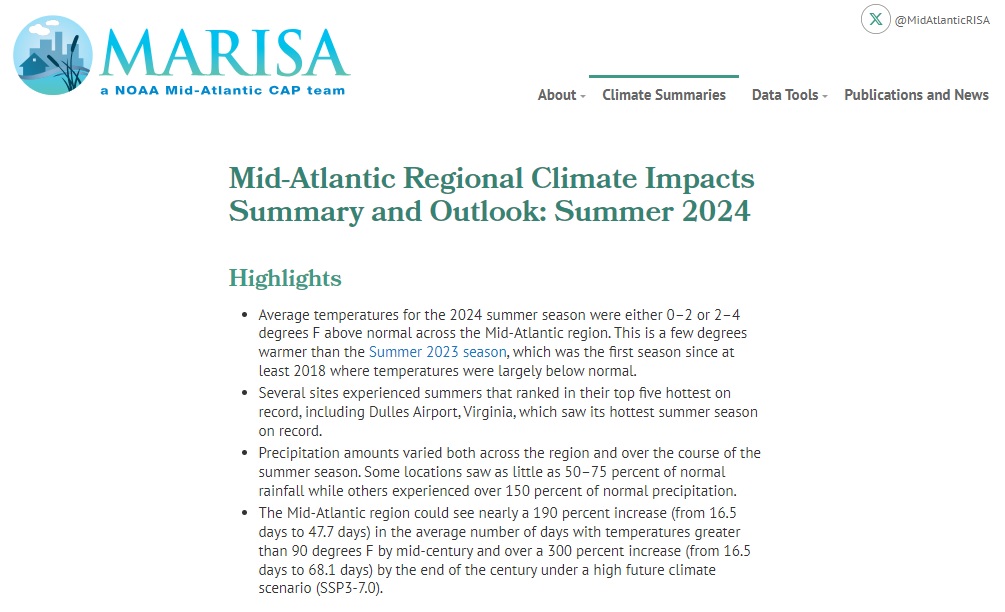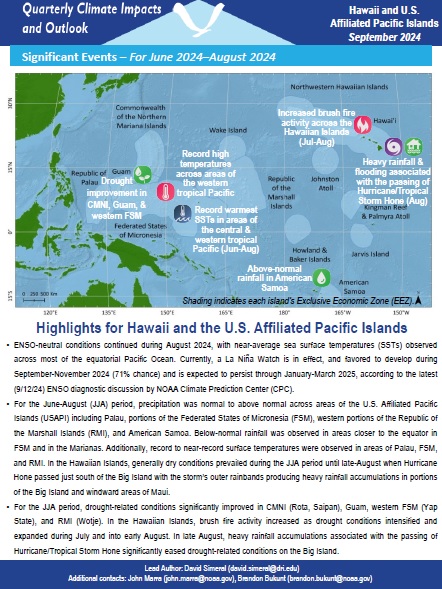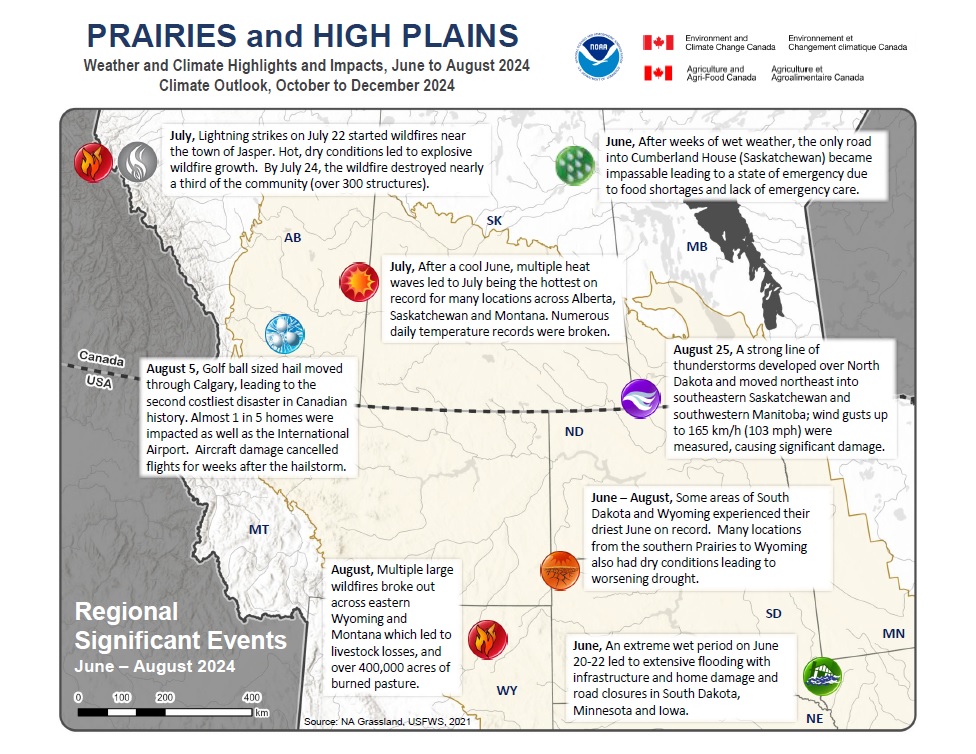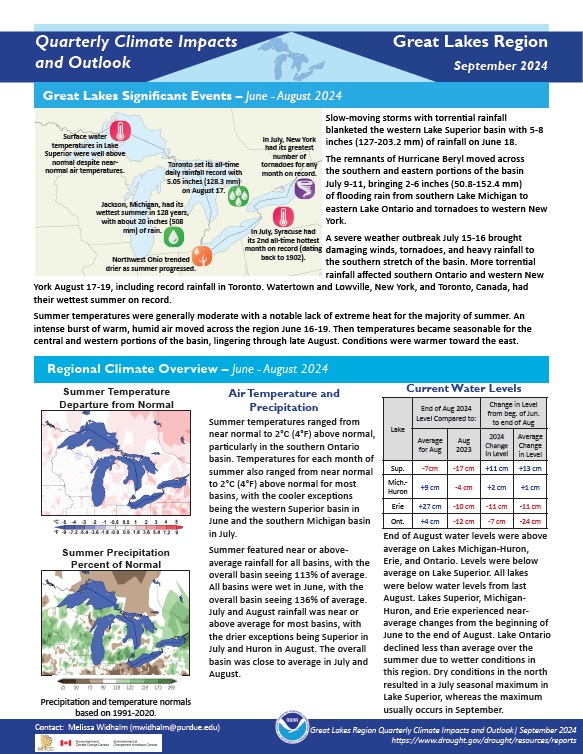This handout provides information on the typical La Niña winter pattern; the La Niña outlook; potential winter and spring impacts; and comparisons of conditions during previous La Niña years for the Missouri River Basin. Updated November 2024.
NOAA’s Regional Climate Services Program created these outlooks to inform the public about climate impacts within their respective regions. Each regional report contains easy-to-understand language, and anyone can access them through the U.S. Drought Portal.
NOAA’s National Integrated Drought Information System (NIDIS) and Physical Sciences Laboratory are partnering with the California State Climatologist/California Department of Water Resources, NOAA’s National Weather Service and National Centers for Environmental Information, and the California-Nevada Adaptation Program (a NOAA CAP team) on the Sector-Specific Drought Early Warning Outlook – Southern California Pilot.
Quarterly Climate Impacts and Outlook for the Mid-Atlantic Region for June–August 2024. Dated September 2024.
Average temperatures for the 2024 summer season were either 0–2°F or 2–4°F above normal across the Mid-Atlantic region. Precipitation amounts varied both across the region and over the course of the summer season. Some locations saw as little as 50%–75% of normal rainfall while others experienced over 150% of normal precipitation.
Quarterly Climate Impacts and Outlook for Alaska and Northwestern Canada for June–August 2024, with an outlook for October–December 2024. Dated September 2024.
Environment and Climate Change Canada, NOAA, and partners created these climate outlooks to inform the public about recent climate impacts within their respective regions. Each regional report contains easy-to-understand language, and anyone can access them through the U.S. Drought Portal.
Quarterly Climate Impacts and Outlook for the Midwest Region for June–August 2024. Dated September 2024.
Summer temperatures were near normal for the majority of the region, except in Ohio and central Kentucky where temperatures were 1–2°F above normal. Summer precipitation (June, July, and August combined) for the Midwest was slightly above normal overall, with precipitation 125%–175% of normal across the northwest, decreasing to 50%–75% of normal across the southeast.
Quarterly Climate Impacts and Outlook for the Northeast Region for June–August 2024. Dated September 2024.
The Northeast had its fourth-hottest summer at 1.8°F above normal. It was record hot for two states and among the 12 hottest for the other 10 Northeast states. The Northeast's summer precipitation was 102% of normal, in the middle third of all years.
Quarterly Climate Impacts and Outlook for the Southern Region for June–August 2024. Dated September 2024.
Summer 2024 temperatures were above normal for the western portions of the Southern region, with most stations running 3°F to 5°F above normal. Precipitation was below normal in the western and eastern portions of the region during Summer 2024, with the west observing 5% to 50% of normal precipitation. In the east, 50% to 90% of normal was more common.
Quarterly Climate Impacts and Outlook for the Pacific Region for June–August 2024. Dated September 2024.
For the June-August period, precipitation was normal to above normal across areas of the U.S. Affiliated Pacific Islands (USAPI) including Palau, portions of the Federated States of Micronesia (FSM), western portions of the Republic of the Marshall Islands (RMI), and American Samoa. Below-normal rainfall was observed in areas closer to the equator in FSM and in the Marianas.
Quarterly Climate Impacts and Outlook for the Canadian and U.S. Prairies and High Plains for June–August 2024, with an outlook for October–December 2024. Dated September 2024.
Quarterly Climate Impacts and Outlook for the Great Lakes Region for June–August 2024. Dated September 2024.
Summer temperatures ranged from near normal to 2°C (4°F) above normal, particularly in the southern Ontario basin. Summer featured near- or above-average rainfall for all basins, with the overall basin seeing 113% of average.


